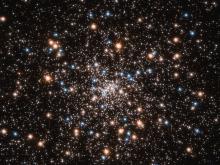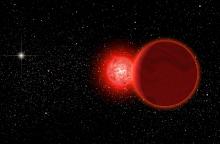Listen to today's episode of StarDate on the web the same day it airs in high-quality streaming audio without any extra ads or announcements. Choose a $8 one-month pass, or listen every day for a year for just $30.
You are here
Venus and Spica
We often tell you about optical illusions in the night sky — things that aren’t what they seem. And a great example is in view right now: the planet Venus and the star Spica. They’re low in the southwest as evening twilight fades away. And the situation definitely isn’t what it seems.
Venus is the brilliant “evening star” — the brightest object in the night sky other than the Moon. Spica is close to the left of Venus tonight. The two objects will move closer over the next few evenings, though. By Sunday evening, Venus will stand a little above the star.
Venus looks so bright because it’s wrapped in reflective clouds, it’s close to the Sun, and it’s close to Earth — about a hundred million miles at present. But Spica is about 15 million times farther than Venus is. If you lined them up at the same distance, Spica would look about 200 million million times brighter than Venus. So you’d have to spread them out to be able to see Venus at all through Spica’s glare.
Another part of the illusion is the number of objects we see. Venus is a single planet. But Spica is a binary star — two stars locked in a mutual orbit. Because of their great distance from Earth, though, their light blurs together to form a single pinpoint. The larger of Spica’s stars is more than 800 times wider than Venus — completing a beautiful illusion in the early evening sky.
Tomorrow: many names for a crowded star system.
Script by Damond Benningfield






